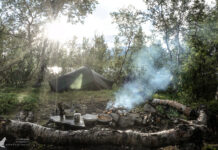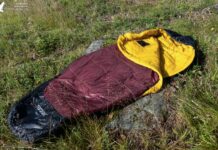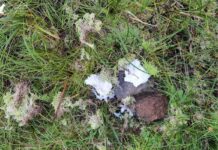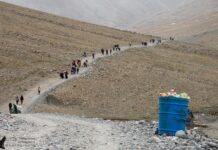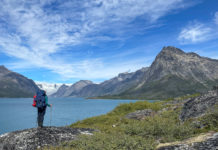Right at the gates of Berlin there are bisons, Przewalski horses, red deer and even sea eagles. An extensive network of hiking trails leads through a fascinating landscape of heathland, sand dunes, grassland and forests with old oak stands. Sounds good, doesn't it? A unique natural paradise has developed on the former military training area "Döberitz". The "Sielmanns Naturlandschaft Döberitzer Heide" invites you to a diverse nature experience. Read my tips for hiking on the Döberitzer Heide and find out what you can see on your trip to the former military training area near Berlin.
Unassigned, unpaid advertising. The article contains affiliate links.
From the Military Training Area "Döberitz" to an Excursion Destination near Berlin
Hiking on the Döberitzer Heide near Berlin
When is the best Season for a Trip to the Döberitzer Heide?
By Bus and Train for Hiking in the Döberitzer Heide
Conclusion about my Trip to the Döberitzer Heide


From the Military Training Area "Döberitz" to an Excursion Destination near Berlin
The use as a Military Training area created special Biotopes
The use as a military training area created special biotopes The Döberitzer Heide was officially inaugurated in 1895 by Kaiser Wilhelm II as a military training area. But even before that, military exercises had already taken place on the site. Around the end of the century, large areas were finally cleared. This resulted in desert-like areas. A narrow-gauge railway was built to transport the timber. In some places even remains of the railway embankment can still be seen. During the Hitler era, bunkers and other shooting ranges were built on the site. Large caserns were also built in the neighbourhood: the Adler-Löwenkaserne in Elstal and the Krampnitz-Kaserne near Potsdam. After the Second World War, the Soviet occupation troops used the area as a training ground.

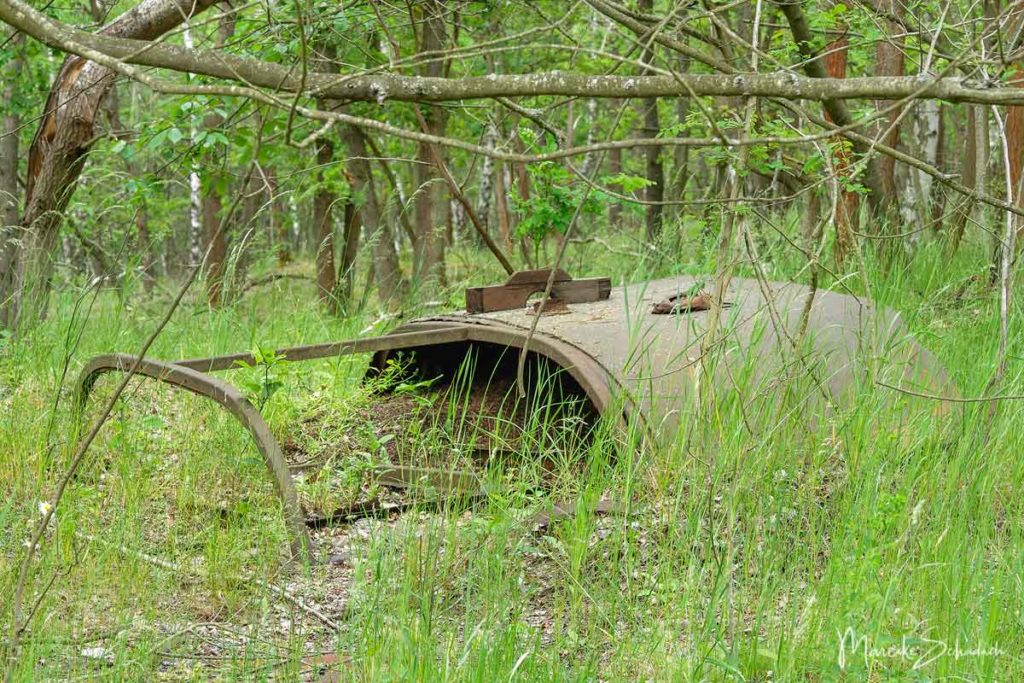
During its use as a military training area, special biotopes developed. Tracked vehicles, fires and explosions limited the vegetation. Open and semi-open areas low in nutrients were created. The area became a unique, wilderness-like retreat for plants and animals. Many of them are on the Red List.
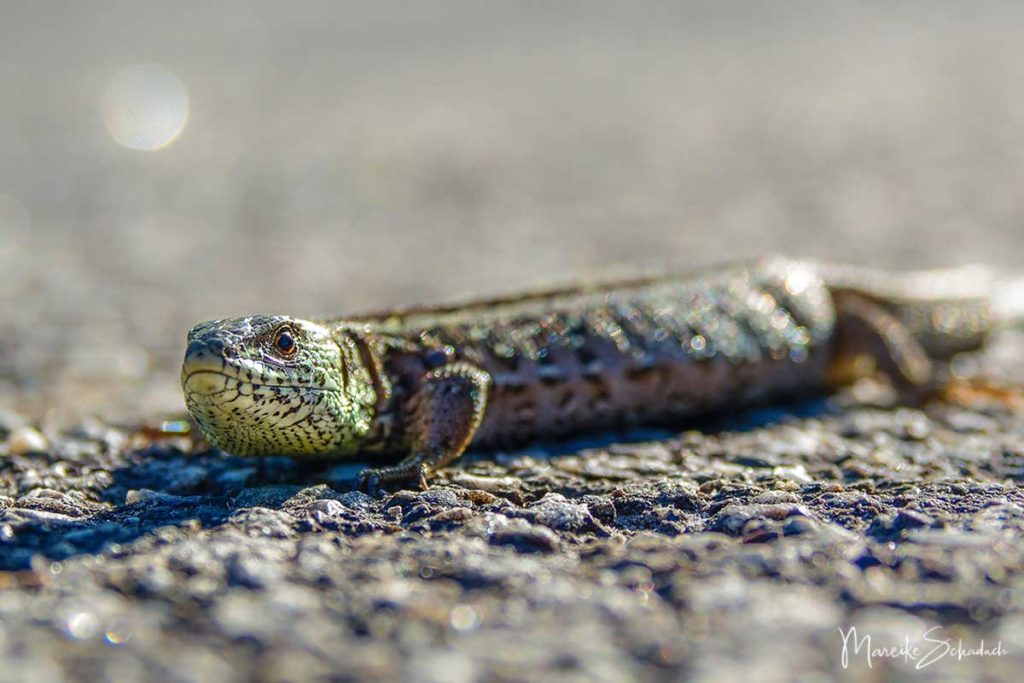
Tip: There are more former military training areas around Berlin which are interesting destinations for excursions. For example Forst-Zinna near Jüterborg or the Schönower Heide in the north of Berlin. Are you interested in Lost Places? Then have a look at my article about the Lost Places in Berlin and Brandenburg .
Nature Experience Space with special Landscape Gardeners and Military Relics
After the withdrawal of Soviet troops in 1992, the Naturschutz Förderverein Döberitzer Heide e.V. took care of the preservation and development of the areas. There was a lot to do. After the end of military use, the valuable open landscapes were threatened by scrub encroachment. The diversity of biotopes and species was endangered by natural succession. In addition, the entire area was contaminated with explosive ordnance and the occupation troops left behind mountains of rubbish and scrap. It was not until 1999 that the clearance of explosive ordnance and the removal of the contaminated sites was finally begun.

Landscape Gardeners
The former military training area became an exemplary nature experience area. With some very special landscape gardeners: bisons, Przewalski horses, red deer, sheep and goats keep the vegetation short and thus help to preserve the valuable semi-open and open landscapes. Unfortunately we did not see any of the big animals during our hike. They were hidden deep in the wilderness zone. But we could observe all the more sheep and goats.
But when we went hiking on the Döberitzer Heide another time the following year, things looked different: From the observation tower we could watch a small herd of Przewalski horses grazing. They were a bit further away, but even without binoculars you could see the animals very well. Not far away from the observation tower there was another surprise for us. There was a huge bison. He was alone and was not irritated at all by our presence. What an impressive animal! He was very close to the fence and grazed here a few dry stalks. Sometimes he looked up. Then he looked much bigger again. His neck had a short, curly mane and his head was decorated with two horns. I would rather not see them in action.

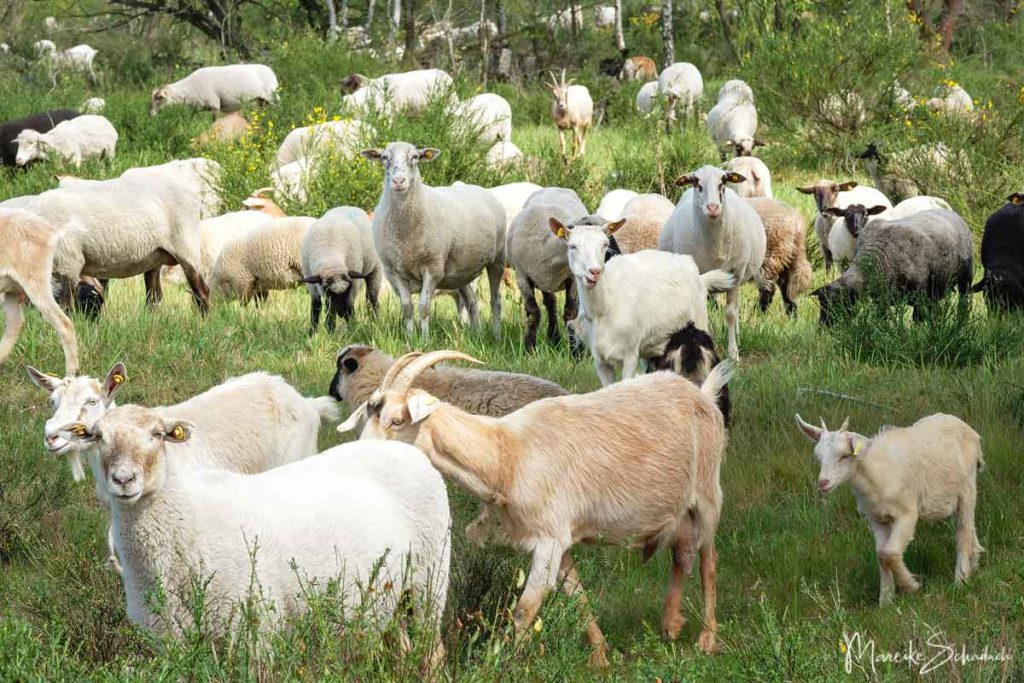
Military Relics
There are still traces of the former military use. For example the bunker ruin at the "Great Desert" or the better preserved bunker west of the obelisk. Also smaller relics can be found along the way. This makes a hike on the Döberitzer Heide even more exciting.

Hiking on the Döberitzer Heide near Berlin
The Döberitzer Heide is divided into two areas:
- Since 2010 there is a 1,860 hectare "wilderness zone" n the middle. Among others, bisons, Przewalski horses and red deer live here. However, this zone is bordered by a triple (!) fence and reserved for nature.
- The "nature experience ring zone", which covers about 1,800 hectares, has 55 km of hiking trails, several picnic areas and an observation tower (85 metres above sea level). Here sheep and goats are the landscape gardeners.

Below on the map you can see my hiking route through the nature experience ring zone. It started at the entrance of Elstal. First I followed the circular hiking trail around the wilderness zone. It is very easy to find. Because most of the time it runs right next to the fence of the core zone. Over 22 kilometres it leads through different landscapes and you can see everything that the Döberitzer Heide has to offer. Only for the obelisk and the bunker I made a small detour.
For your orientation I can also recommend the Open Street Map. There are many details, landscape forms and paths drawn in.
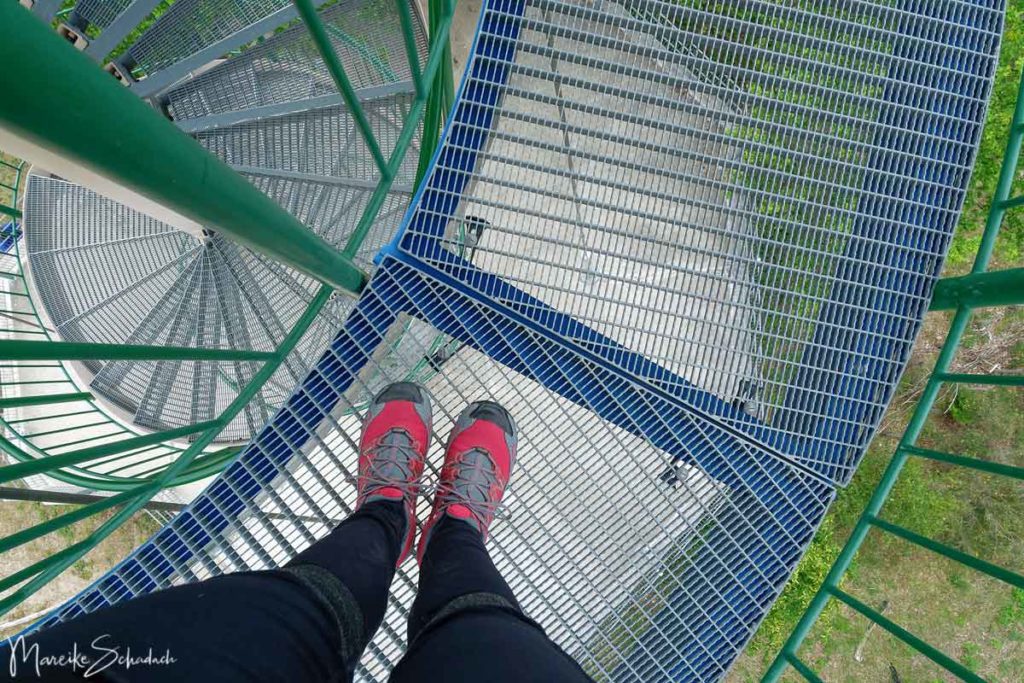



When is the best Season for a Trip to the Döberitzer Heide?
Hiking on the Döberitzer Heide is always a worthwhile excursion. At any time of the year. The landscape always shows itself with a new face:
- Spring: In May the broom blossoms turn yellow and the silver grass gives the open areas a reddish shine in June.
- Summer: the flowering sand-thyme and the blooming heather colour the landscape purple. When does the heather bloom? As a rule of thumb you can easily remember: 8.8. to 9.9.
- Autumn: Now it is most beautiful in the wooded areas, as soon as the leaves of the trees have turned an autumnal colour.
- winter,: When there is snow, the wide open area north of the Döberitzer Heide is a great winter wonderland. The area is also ideal for cross-country skiing.
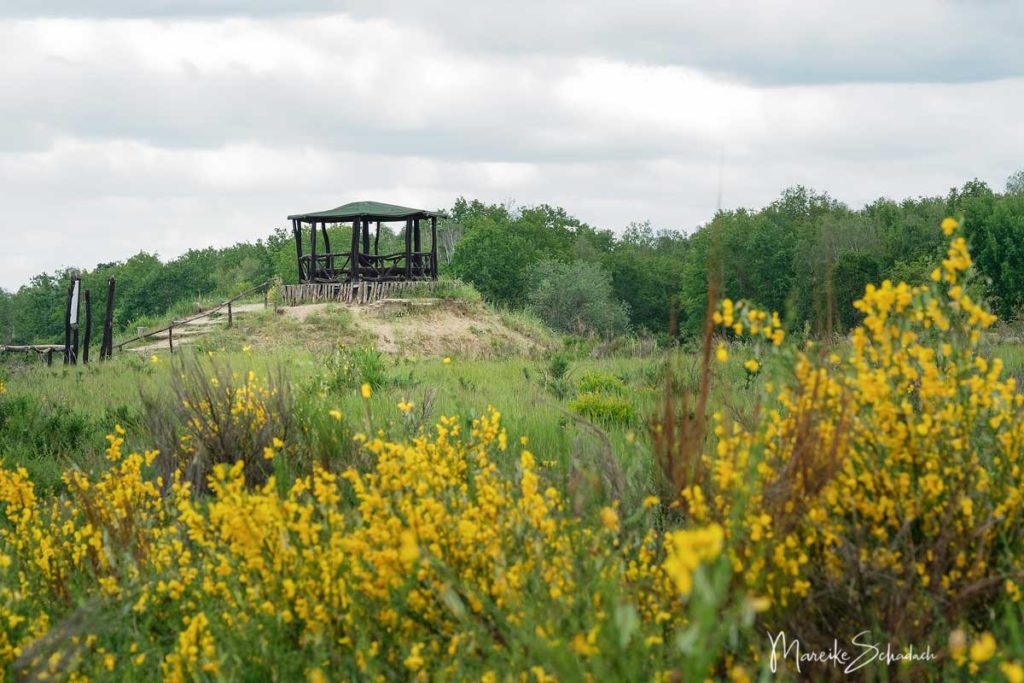
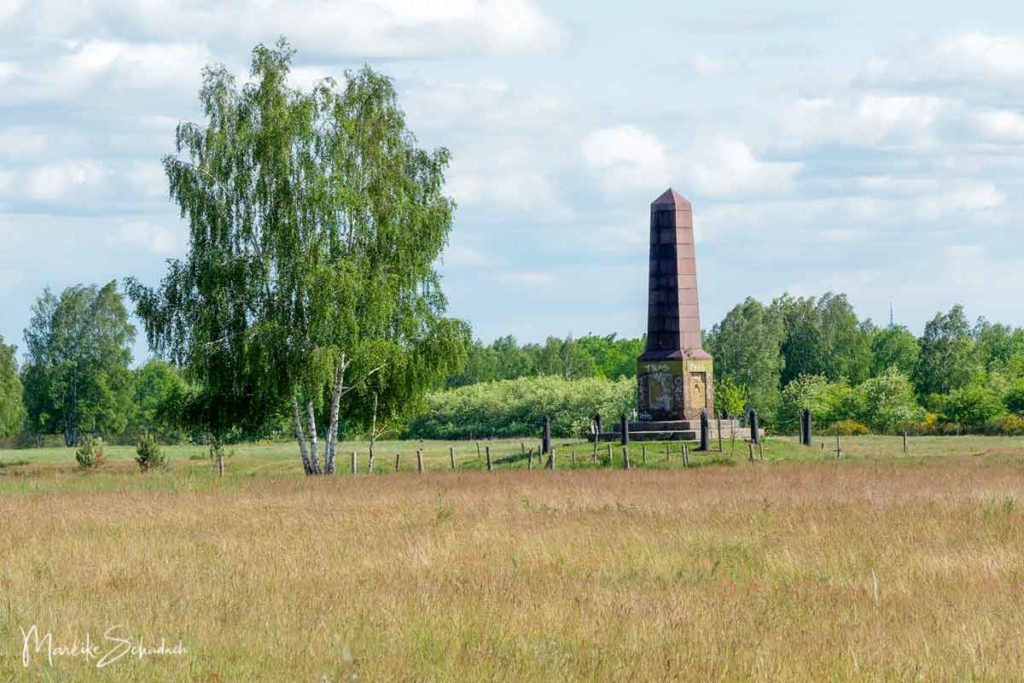
By Bus and Train for Hiking in the Döberitzer Heide
A trip from Berlin to the Döberitzer Heide is also easily done by public transport:
- To Elstal and Dallgow Döberitz with the regional train line RE4. The train runs hourly. From Berlin main station you need about 20 minutes. From both stations you can reach the Döberitzer Heide in about 30 minutes on foot.
- At the entrance Krampnitz (bus stop Potsdam, Krampnitzsee) the bus line 638 goes to Spandau station (about 30 minutes).
- To get to Priort, take the regional train RE4 to Wustermark and from there take the RB21 for one more stop to Priort station. Or you can take the RE4 to Elstal and from there three more stops with the bus line 662.

Conclusion about my Trip to the Döberitzer Heide
After my day trip to the Döberitzer Heide and 27 kilometres of hiking, one thing is clear: I will definitely come back! A trip to the Döberitzer Heide is worthwhile.
- The nature reserve is easy to reach by public transport, bicycle or car.
- Döberitzer Heide is not overcrowded, even on beautiful weekend days you won't meet many other hikers or bikers.
- The network of paths is well signposted and marked, there are information boards, picnic areas, benches and a lookout tower (of which, unfortunately, you don't see much).
- I found it a little bit a pity that on the circular path around the wilderness zone one always has the fence beside oneself. Good for the orientation but the experience of nature is a bit reduced.
- There is always something to see: great landscape, animals, plants. Cultural-historical relics from the time of military use make the hike even more exciting.
Important to know for cyclists: there is an asphalt cycle path only on the edge in the north of the Döberitzer Heide. Often the paths are very sandy, so that you have to push sometimes.

Book Recommendations for Trips in and around Berlin
Are you drawn to the outdoors in the countryside? Then I have a lot of tips for excursions for you (sorry - the books are all in German):
Did you like my tips for a trip to the Döberitzer Heide? Then follow me on Facebook, Pinterest or Instagram. I would also be very happy if you share my article with your friends. Do you have any questions or suggestions? If so, please write me a comment!





